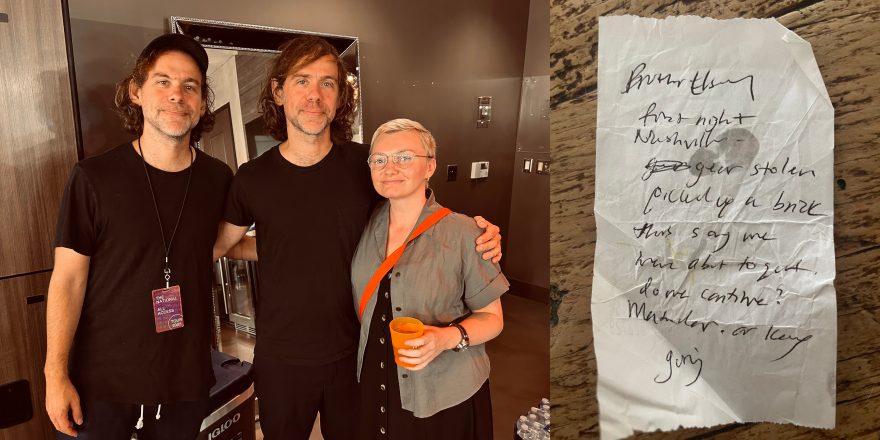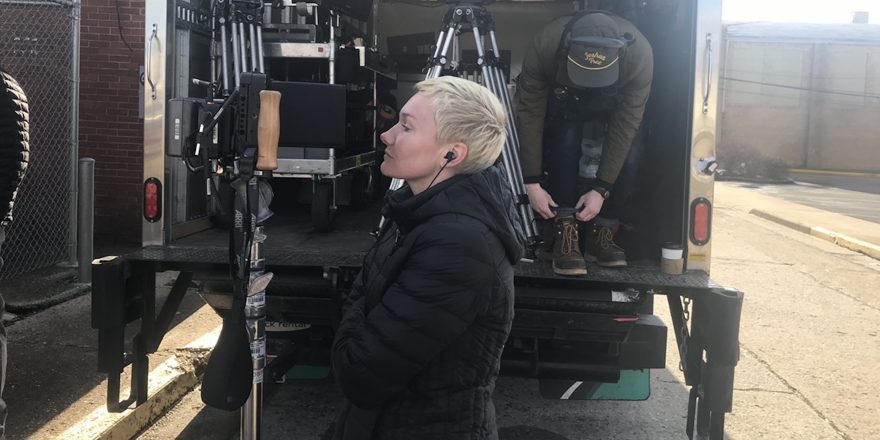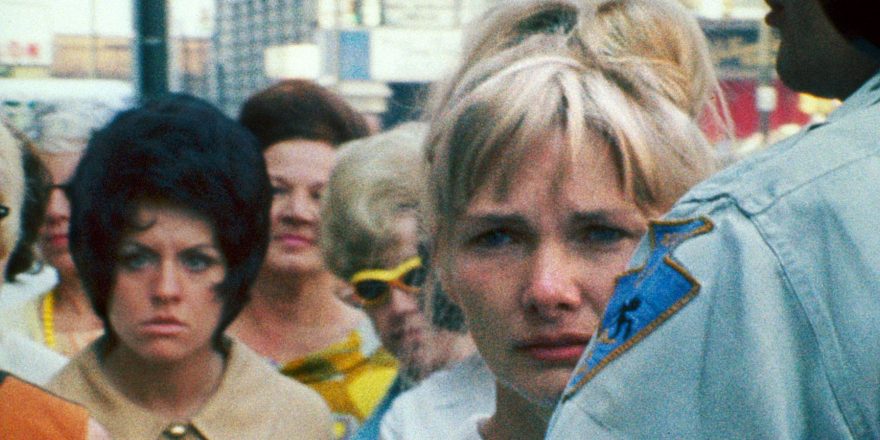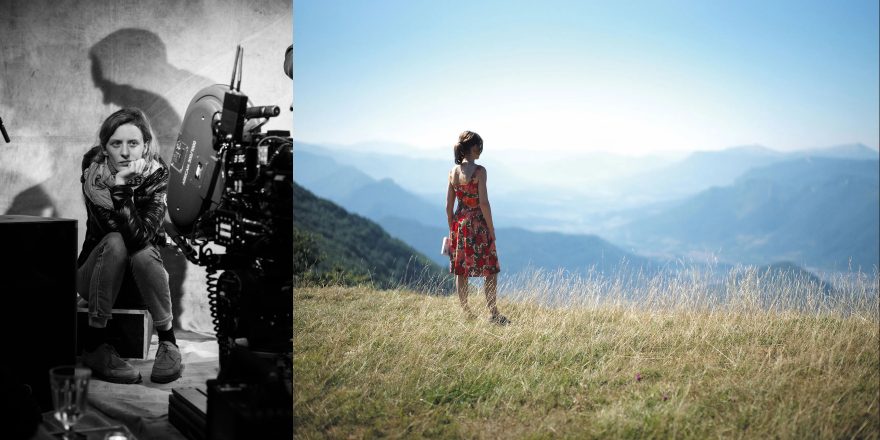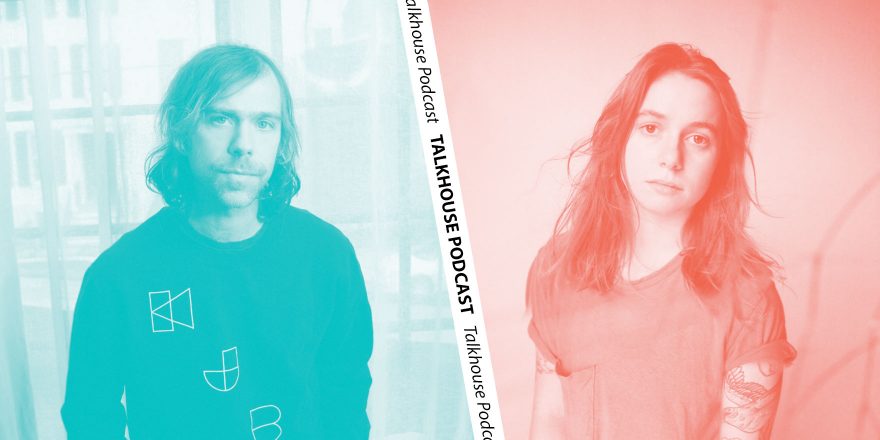A film’s cinematography, direction and acting typically grab most of the attention, and a film’s soundscape is often neglected. I think that’s because we feel and hear a film’s sound, but cinema is a primarily visual medium. My new feature, Dandelion, is a movie about the people who make music and that’s why the creation of sound was at the forefront of crafting this film.
Dandelion’s sound began with my own music taste. Elliott Smith is my favorite musician of all time. But here’s a fuller list of the music that has influenced my life and, consciously or subconsciously, leaked into the sound of the film: Angel Olsen, Phoebe Bridgers, Julien Baker, Ane Brun, Liz Phair, Sufjan Stevens, Kacey Musgraves, Nick Drake, Damien Rice, Arlo McKinley, Carole King, Joni Mitchell, Adrienne Lenker, Clairo, Civil Wars, Joy Oladokun, Iron & Wine, Michelle Branch and Tracy Chapman. Then there are bands like Silversun Pickups, Frightened Rabbit and The National and composers like Nils Frahm, Akira Kosemura and Dustin O’Halloran.
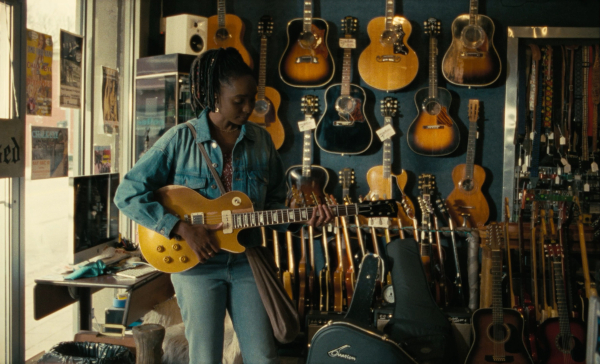
While carrying and collecting these influences over the years, two pivotal moments happened that led to me conceiving the idea for Dandelion. The first was about a decade ago at Sky Bar in Los Angeles, when I heard Ted Leo play. Most of the L.A. crowd was there to drink and socialize. Ted Leo – one of the most incredible musicians in the world – was treated like wallpaper. As if it couldn’t get any worse, an employee approached Ted and whispered something into his ear. Ted leaned into the microphone and said, “If you are driving the silver BMW parked out front, your car is in the valet. Never thought I’d say that.” Ted was reduced to a lobby performer for a crowd that had no interest in him, or his guitar melodies and dark lyrics masked in energetic orchestration. That moment became the opening scene of Dandelion.
Dandelion is about a singer-songwriter in a downward spiral who is not appreciated in her time and who, like Ted Leo, plays a gig at a place far from her comfort zone. It is at this gig that she meets Casey, a guitarist who walked away from his dream long ago. They fall into an intoxicating whirlwind romance that sends Dandelion on a journey toward the discovery of a voice that is authentically her own. Music is the central part of the film. The characters speak to us and each other through the honest songs that they write together, because songwriting is their communication style. Or, as Casey’s bandmate Brady says in the film, “Music is a way of living.”
The second pivotal moment happened after I made my debut feature, Holler. There was hype around the film ahead of its SXSW world premiere. Opportunities and meetings were on the horizon. I was on the precipice of where I always wanted to be. Then the pandemic happened, and most of those opportunities disappeared in the blink of an eye. Nobody cared about movies, because lives were being lost and the world was in chaos. That only added shame on top of the real pain and shock I was feeling. That experience inspired the song that kicked off my sophomore film, Dandelion …
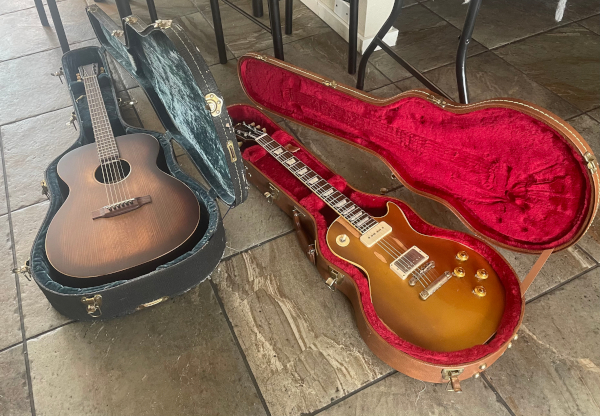
I wrote lyrics for “The Ghost of Cincinnati” while walking around Washington Park and Over-the-Rhine in Cincinnati, Ohio, on a snowy day in February 2021. I simply wrote what I felt: “I’m overworked, overlooked and over myself.” After a virtual meeting with Aaron and Bryce Dessner about Dandelion, we hit it off and the collaboration quickly began. I’m often asked, “How did you get the Dessners on board?” The answer is that they loved Holler and the script for Dandelion, and they had a good vibe with me. Or as Aaron once bluntly said, “We’re doing this because we think your shit is good.” Is it that hard for people to believe that they thought I was talented? Repeatedly being asked this question at that time in my life was just another blow to how insignificant and small I already felt.
The Dessners and I had to figure out what our collaboration and communication would look like, and I trusted them to establish that, because while I’m the director, I’m not a professional musician. I began texting and emailing the Dessners words, lyrics, concepts and inspirations for how I wanted the film’s songs to feel. I sent descriptions of what the moments in the film were about. I shared anything that could help to put them inside my head. They would use those words (or not) and often get inspired with something brand new, and text back full demos. The overall vision was for the music to evolve like the character of Dandelion does. In the beginning, Dandelion’s songs are not very good, but they have promise. I took words from the film’s fully realized main song, “Custer Park” and worked backwards by pulling key lyrics into Dandelion’s earlier songs-in-progress for her musical evolution to work.
Aaron and Bryce don’t write straightforward lyrics. Their lyrics are often cryptic, while I write very visually. I wanted a song about Custer Park – the location Dandelion and Casey will always share, because they created the song there. Through “Custer Park,” they are telling each other what the moment means to them, but it’s mixed with acknowledgment of their attraction to one another. The lyrics also show their awareness that this could be a messy relationship, but they can’t resist it, as they sing, “If we’re honest now, could you set me straight? I wanna forget about the things I did,” and “Would you set me free, would you let me see, in this way that could save my skin? Was it worth all the trouble we’re in?”
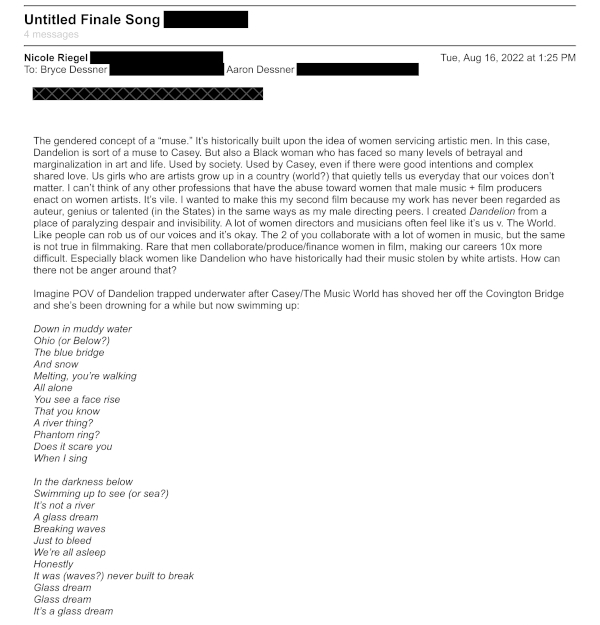
“Old Friend” is a song about being connected and in love with someone, but you foresee it not working out. It imagines two lovers seeing each other years later, possibly with new partners, and telling people that they are old friends. Bryce and Aaron used dueling guitars for “Old Friend,” because the song is an argument filled with passive-aggressive and confrontational remarks like, “Old man, where’s this night going to? You’re the one who started this. But where the hell will you end up when the fire’s all burned out?” and “Old friend, are you going to carry me when the light of morning comes?”
We talked about Nick Drake and The National’s “Lucky You” as inspiration for “Honey.” I gave Dessners the direction to write a solo for Casey that’s about his wife, but that Dandelion, and the audience, could mistake for being about Dandelion. The song is Casey’s cry for help and an apology to his wife for how he keeps falling short, and how helpless he feels. The Dessners wrote vulnerable lyrics like, “Hold me in your arms like my mother and remind me you’re somebody’s daughter,” and “I never meant to wall you in. Honey, I’m afraid of my promises.”
In the musical arc of the film, Dandelion’s early songs have promise, but they’re not memorable or fully realized yet. Then with Casey’s help, the songs progress to a new catchy level, but are influenced by his sound. Finally, Dandelion comes into her own sound, because of all this life experience. Casey isn’t the savior who finds her sound, he’s merely a part of Dandelion’s greater journey. We drop some Easter eggs about Casey in the film’s final song, “River,” with lyrics such as, “With eyes I thought admired me. Just a boy who could never be free, scared of the woman he sees.” All the songs had to feel similar, except for the final song, which needed to feel triumphant and distinct, and added new instruments. KiKi Layne, who plays Dandelion, felt such a strong connection to a more bluesy, jazzy vibe, and so that’s how we arrived at what kind of sound Dandelion would discover in the end.
Assembling Casey’s former band and their sound was another challenge. The Detroit-born, Nashville-based band Brother Elsey play themselves in the film. I’d searched for the right band for quite some time at a lot of Nashville listening rooms, and I happened to be in the audience for Brother Elsey’s first Nashville show at The Basement. Like The National, they are a band of brothers. The lead singer, Brady Stablein, and the bass player, Beau, are also twins like Aaron and Bryce. (Brady and Beau’s brother Jack and their friend/blood brother Dalton Thomas make up the rest of the band.) I loved hearing Brady tell their story and struggle, and I jotted down notes on the back of my bar receipt (which I still keep in my wallet). I was so inspired by them that I approached them, and we all had a beer together while I told them the vision for the film we would make together. The plan was for them to play their own music in the film, which would intentionally be different from the music Casey and Dandelion create together, and to make music with Grace Kaiser, a singer-actor and longtime collaborator of mine. We’ve all been collaborators and friends ever since.
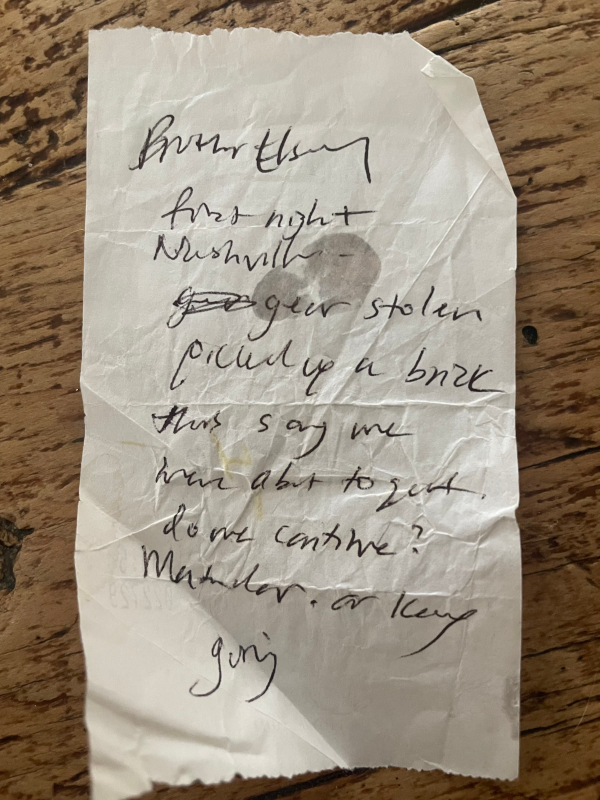
Once the film’s songs were finished, we began the pre-recording process. Pre-records happened across New York, Nashville, and Covington, Kentucky, because the Dessners and Brother Elsey were both on band tours. I was prepping the film in Kentucky while the cast was based in New York. We did both live takes and used the pre-recorded tracks, because the live takes give real emotion to a performance, but we also wanted the safety net of having pre-recorded tracks as well. Whichever way we went on any given take, all of the singing was done by the actor or musician you see singing on screen.
The core of directing is having and maintaining your film’s vision. Nobody else on a film can see the overall bird’s eye view of the picture; each department is focused on being as good as it can be to contribute to the whole. In musical terms, I had to be the conductor and make sure the first-chair violin was in harmony with the rest of the orchestra, that the horns complemented the woodwinds. One of the biggest challenges in making this film, and my biggest fear, was that we would not achieve a cohesive evolution of sound.
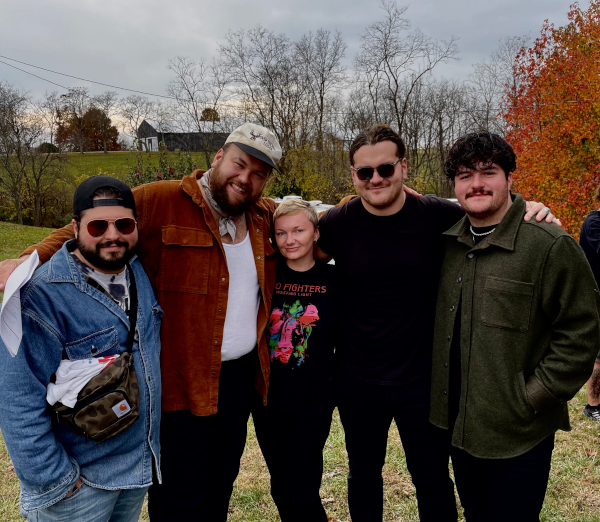
For the film’s score, I always prefer to have a composer on board at the script stage. I do this because I want creative script notes from all my trusted department heads, from the perspective of their expertise. With my first movie, Holler, I was fortunate enough to have an artist’s residency devoted to sound at George Lucas’ Skywalker Ranch. I learned about film scoring from composers like Alan Silvestri, Fil Eisler and even the San Francisco Philharmonic Orchestra. One of the most important things I learned during that time was to give composers emotional direction. The emotional direction I gave the Dessners was this: the score is not about the feeling of an overall scene, but it needs to be Dandelion’s heartbeat. I told them that I love the warmth and richness of guitar, live cello and piano, but that I was wide open to discovery. There actually wasn’t much back and forth on score, because Bryce and Aaron knocked it out of the park on the first try.
My favorite cue is titled “The Badlands.” It’s when Dandelion walks through Badlands National Park after being creatively unblocked and gains a new perspective on patience and being an artist. The cue has the Dessners’ signature piano melodies. It’s in a 7/4 time signature and I hear a lot of Steve Reich in it. I don’t know why they chose that time signature, but I think it gives the scene a sense of exploration. The repetition of it feels like it’s pushing Dandelion forward, nudging her through the Badlands. In the end, the Dessners’ trusted engineer, Bella Blasko, smoothed and ironed all the wrinkles to bring cohesion to the songs and score to finalize them for picture and soundtrack.
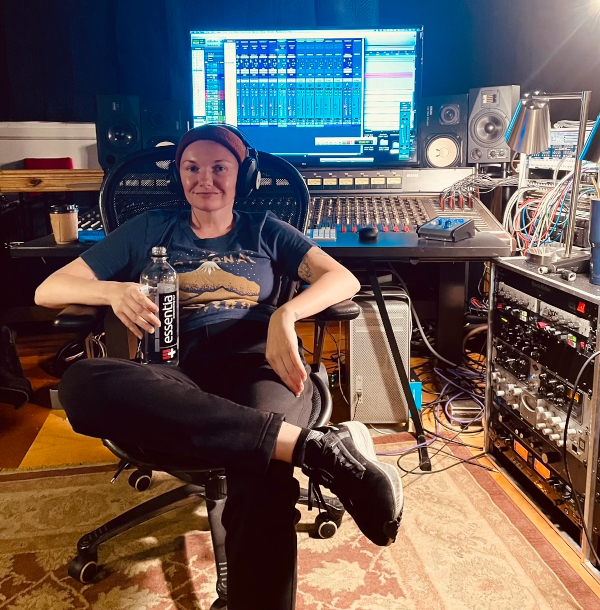
I also learned sound design during that Skywalker Sound residency, where my mentor was Ren Klyce, David Fincher’s sound designer. While Fincher’s films are often quite loud, Ren also taught me how impactful something quiet can be. Silence is powerful, in both real and reel life. I called upon what I learned from Ren for the scene where Dandelion stands tiny before the vast Badlands landscape, in a wide, locked-off shot that conveys her mindfulness and appreciation for her craft. The other scene where silence really spoke is when Casey leaves his guitar, and his dream, behind in the hotel. We don’t follow Casey; instead, we stay with his abandoned dream in another locked-off shot. For me, it was as if Casey had laid his best friend to rest in a coffin. I wanted to feel that death and that lack of music in his life.
Sound design and mix was the last sonic step. Dandelion’s sound design was a collaboration with Brian Berger, who I think is a young, once-in-a-generation sound designer and mixer. When I asked Brian to sum up our approach and collaboration on Dandelion, he wrote this: “Immersion and juxtaposition were key when it came to soundscape. Whether it was music or environment, we wanted to feel the film bloom around us sonically. So, for live performance, I paid a lot of attention to perspective. Are we behind the stage? Then we’d hear the snare drum dry and louder than the vocals. Are we seeing things from the crowd’s perspective? Then we want to hear a lot of fronts of house P.A. mix. Nicole brilliantly set up the structure of the film’s locations to match Dandelion’s emotional context, and we wanted to emphasize that.”
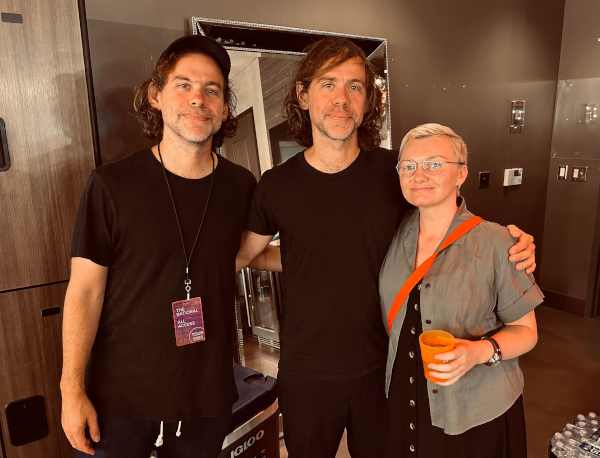
Creating Dandelion was like making a movie and an album simultaneously. I had no clue how to make a music movie and now I know exactly how to make one. Looking back on the creation of the film’s sound, I learned an important exercise that I hope everyone, but especially other directors, will try at least once: make the time to watch an entire movie with your eyes closed and your ears open. What do you hear? How is the sound evolving? Where do you hear the sounds in the room?
And how does it feel to be inside of a sound?
All images courtesy Nicole Riegel unless otherwise stated.


